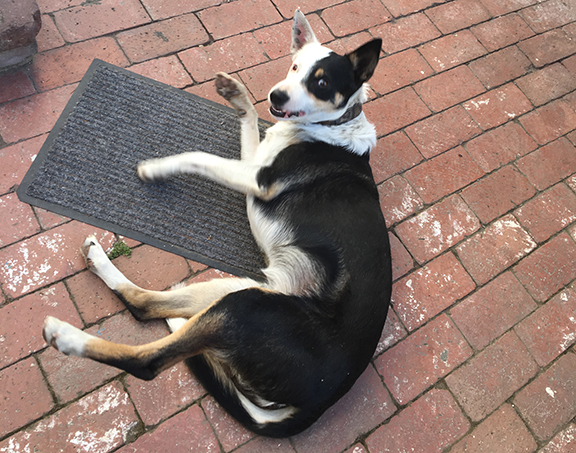I was reading a news article about a man who was abusing a three-month-old puppy by allegedly kicking him and swinging him in the air. After I got over feeling sick to my stomach, I started thinking about force, training, dogs, correction, and punishment, and then I started feeling sick again.
There is a big divide in the dog training world over whether dogs need to know what they have done wrong in order to learn what is right. But this article reminded me that people do not always have the best judgment or a clear understanding of what punishment really means.
Can we agree that kicking and swinging a puppy is abuse? If so, can we also agree that a single kick is abuse?
Probably not. Most people draw their own line somewhere. To some, a single kick might be rationalized by saying it was just once or the dog was really out of line. But here is the real issue: you do not get to decide what is punishment and what is abuse.
The dog does.
Actually, any learner does. That includes children, dogs, horses, cats, even elephants. We no longer hit children’s hands with rulers. We do not hit spouses for disobedience. So why are we still hitting animals?
Because many people assume animals do not understand any other way or that they need punishment to learn. The good news is that this assumption is wrong.
This study, “Is Punishment an Effective Way to Change the Behavior of Dogs?” explains that punishment in dog training tends to increase aggression. That means you are just fueling a cycle. The human punishes the dog, the dog becomes more defensive or aggressive, the human punishes again, and the cycle continues. The loop does not break until the dog bites someone or worse.
So here is the question: why even draw a line between abuse, punishment, and correction? If you do not use punishment, you do not have to define it or limit it. If you train with rewards, you do not have to second guess your own behavior.
No one ever says, “Wow, you over-rewarded that dog.”
Sure, too many treats can cause weight problems, but that is an easy fix. Just make the treats smaller.
I aim to be force free in every interaction with my dogs. I need them to trust me if they ever get loose so they come to me instead of running away. That trust only happens if I have built a relationship based on safety rather than punishment.
It is time for us to show that we are smarter than the animals we live with. If your dog chews your favorite shoes and your first response is to hit them, ask yourself who left the shoes out. What do you want your dog to learn and can you teach it before something goes wrong?
Plan ahead. Decide what your dog needs to leave alone, what they are allowed to have, and where they can go. Then teach those things.
And if they make a mistake?
It means you did not teach it well enough yet. So go back and teach it again.
Letting go of anger and frustration is freeing. It puts your mind into planning mode instead of punishment mode. You begin thinking about what is next, what to teach, how to connect, and how to grow together.
And if you really need to hit something?
Try a punching bag. Not your dog.

